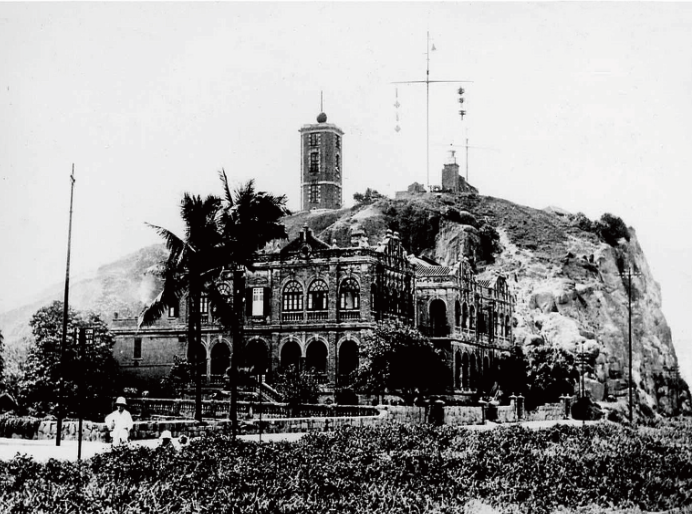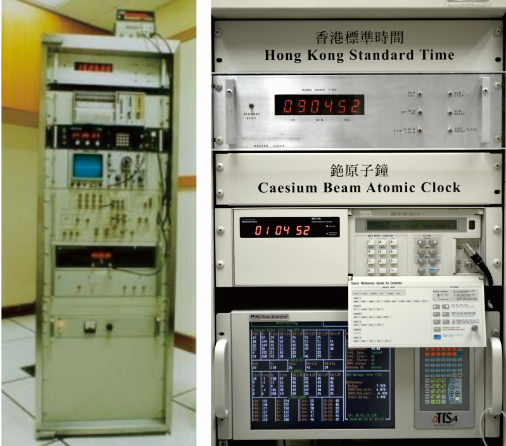In 1883, the Hong Kong government adopted the Royal Society's proposal to set up an observatory in Hong Kong to provide meteorological observation, geomagnetic observation and time service based on astronomical observation.
In 1885, Time Ball was set up in Tsim Sha Tsui police station, and the ball fell at 1 PM every day to provide time signal for port ships. Astronomical time determination is mainly carried out through the transit instrument.

The First Time Ball on Tsim Sha Tsui Police Station (Image by CHEN Zhiming)
On January 8, 1908, Time Ball was moved to Signal Hill, Tsim Sha Tsui. Later, the time ball exited the historical stage due to the rise of radio broadcasting technology.
On June 30, 1933, the time ball was dismantled after the last drop. After the victory of the Anti-Japanese war, the Hong Kong Observatory used the signals from other timing stations to calibrate the pendulum clock, and the timing accuracy was significantly improved.

Time Ball on Signal Hill, Tsim Sha Tsui (Image by CHEN Zhiming)
On April 11, 1953, Radio Television Hong Kong(RTHK) began broadcasting six-pip time signals per hour.
In 1966, the Hong Kong Observatory was equipped with a quartz clock system to replace pendulum clocks. The timing accuracy was further improved and six-pip time signals was broadcast directly through the 95 MHZ frequency.
In 1980, the Hong Kong Observatory established the cesium atomic clock system.

Caesium Beam Atomic Clock and GPS Receiver (Image by Hong Kong Observatory)
In May 2004, The Hong Kong Observatory (HKO) participated in the coordinated universal time reduction by providing atomic clock time data to the International Bureau of Weights using the navigation satellite co-vision method, through a high accuracy time broadcasting system. Now, Hong Kong people can use the Internet clock and the "call weather" system of the Hong Kong Observatory and the six-pip time signals of RTHK to keep time. Meanwhile, they can also check the computer clock through the Internet time service of the Observatory.
 Print
Print